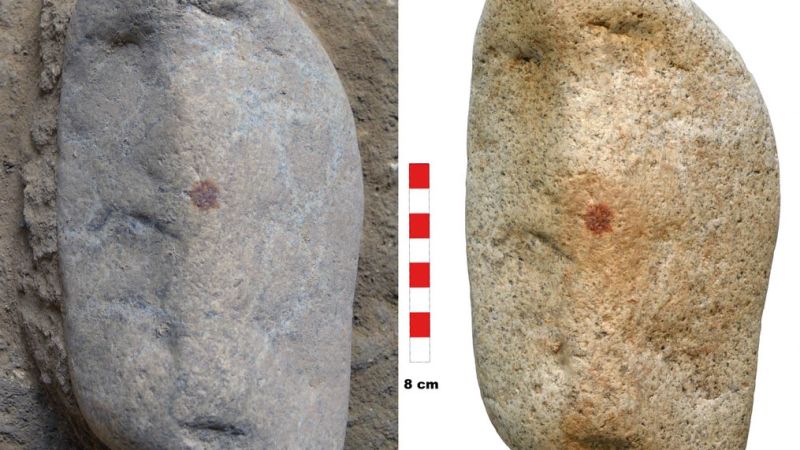Recent archaeological research conducted in central Spain has unveiled a remarkable find that might be one of the oldest symbolic artifacts with a human fingerprint discovered in Europe. This ancient object, a pebble discovered in the San Lázaro rock shelter located in Segovia, has provoked a deeper consideration of the cognitive abilities and cultural lifestyles of Neanderthals, uncovering their potential capacity for symbolic art and representation.
The project, led by a team of Spanish researchers, uncovered this intriguing artifact nestled beneath approximately 5 feet (1.5 meters) of sediment during an excavation carried out in July 2022. This discovery, published in the journal *Archaeological and Anthropological Sciences* on May 24, emphasizes the notion that Neanderthals, who became extinct roughly 40,000 years ago, shared many traits and abilities with modern humans that were previously underappreciated. The pebble in question remarkably features a distinct fingerprint, indicating that Neanderthals may have engaged in creative or ritualistic practices similar to those of modern humans.
María de Andrés Herrero, a prehistory professor from the Complutense University of Madrid and a key coauthor of the study, expressed her astonishment upon the team’s initial sighting of the pebble due to its face-like appearance. The piece, unique compared to typical tools or artifacts found at the shelter, exhibited distinctive characteristics, such as a peculiar red dot, which led researchers to suspect it may have intentionally been modified by its original owner.
Determining the exact nature of the fingerprint presented a fascinating challenge. To unveil secrets hidden within the red dot, the research team enlisted the expertise of forensic specialists from Madrid’s forensic police corps. Herrero detailed their collaboration, highlighting the initial skepticism encountered from police, accustomed mainly to examining much more recent fingerprints. The breakthrough came from employing advanced forensic techniques, including multispectral imaging, which ultimately affirmed that a human fingerprint was indeed embedded within the mark.
Following extensive analysis, forensic investigators concluded that the fingerprint likely belonged to a male Neanderthal. Paul Pettitt, a paleolithic archaeology specialist from Durham University in the UK, corroborated the significance of this fingerprint verification, establishing a direct link to Neanderthal physical presence. The marks confirm previous assumptions that Neanderthals were more artistically inclined than commonly perceived.
In addition to marking potential artistic intent, the study determined that the ocher pigment—a clay material—was applied to the fingertip responsible for the imprint on the quartz-rich lithic surface of the pebble. Such findings suggest that this may not just be a mere object but indicative of the social, cultural expressions that Neanderthals were capable of manifesting within their environment.
Statistical modeling indicated that the arrangement of the red dot was not random, implying a deliberate act that involved symbolism—a notion further bolstered by the study team’s conclusions. The researchers theorized that the pebble, displaying characteristics akin to facial features, could represent a primitive form of visual language or communication. Such implications challenge long-standing perceptions of the cognitive capabilities distinguishing Neanderthals from early Homo sapiens.
Pettitt pointed out that the artifact serves as evidence of the burgeoning awareness surrounding Neanderthal culture, reiterating that such artifacts reveal their engagement with visual art and symbolism. Herrero illustrated that through their findings, scientists are reconceptualizing the previously rigid demarcations between Neanderthals and modern humans, signaling that the line separating these two groups may be thinner than historically assumed.
Furthermore, future research efforts are on the horizon as Herrero and her team plan to examine other potential artifacts that could provide even more insights into early human cognitive and cultural development. Their collaboration with forensic technologies is set to expand archaeological investigations, showing keen significance for both fields as they work in tandem to unveil mysteries from the past and illuminate patterns of human evolution.
In essence, this extraordinary discovery not only reshapes the narrative concerning Neanderthal capabilities, but it also opens a new window for interdisciplinary cooperation between archaeological research and forensic science, fostering promising prospects for unraveling our shared human history.



